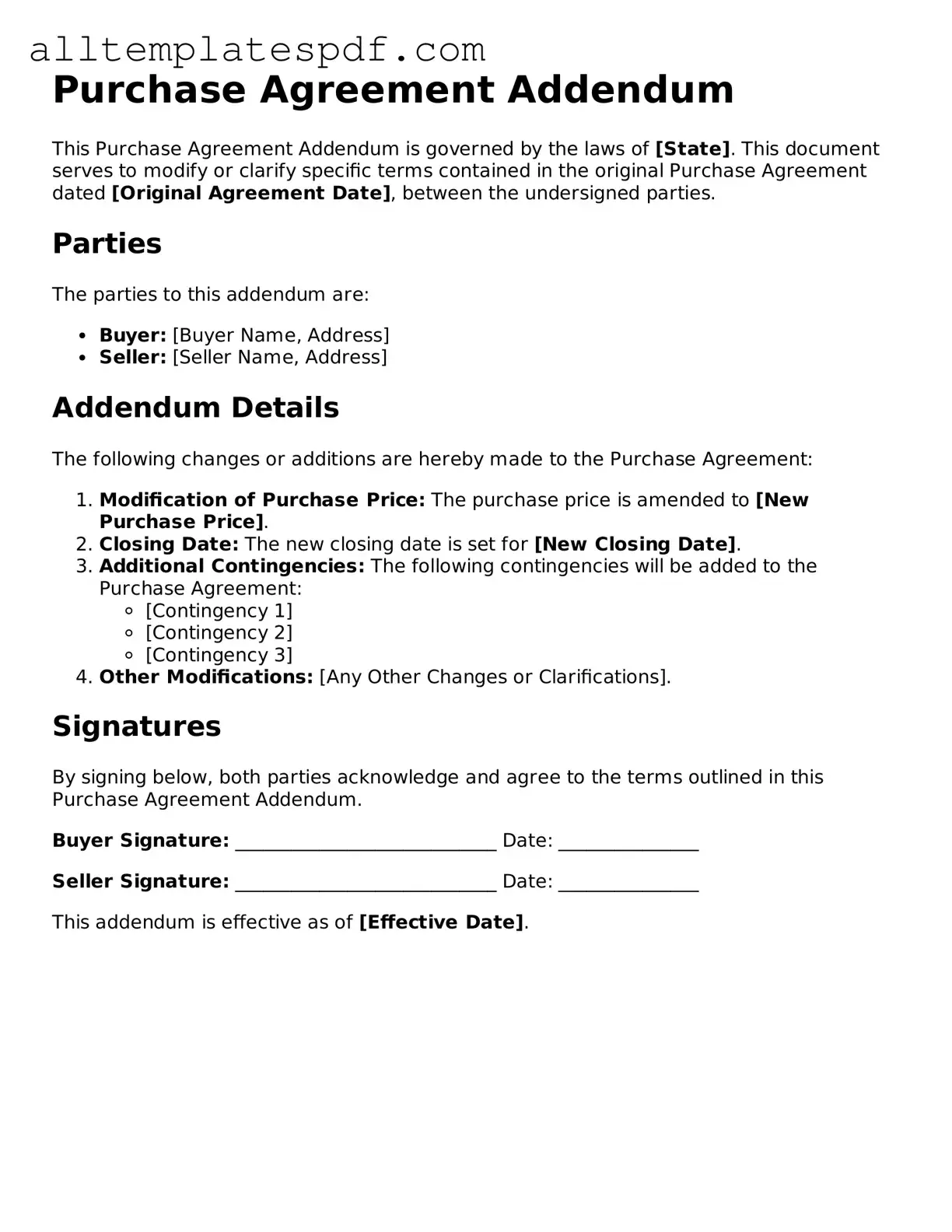When filling out a Purchase Agreement Addendum form, individuals often overlook critical details that can lead to complications later on. One common mistake is failing to clearly define the terms of the addendum. Specificity is key. Without clear terms, misunderstandings can arise, leading to disputes between the parties involved. For instance, vague language regarding repair responsibilities or timelines can create confusion and frustration.
Another frequent error is neglecting to include all necessary signatures. An addendum is not legally binding unless all parties involved sign it. This oversight can render the addendum ineffective, which may result in significant legal and financial consequences. Ensuring that every party's signature is present is essential for the enforceability of the agreement.
Additionally, many individuals forget to attach relevant documents or disclosures that support the changes outlined in the addendum. This can include inspection reports, financing contingencies, or any other pertinent information. Without these documents, the addendum may lack the context needed to fully understand the modifications being proposed, potentially leading to future disputes.
Another mistake involves overlooking the deadline for submitting the addendum. Real estate transactions often operate within tight timelines. Missing a deadline can jeopardize the entire agreement, causing delays or even cancellations. It is crucial to be aware of these timelines and to submit the addendum promptly.
Lastly, many people do not seek legal advice when completing the Purchase Agreement Addendum form. While it may seem straightforward, the implications of an addendum can be significant. Consulting with a legal professional can provide valuable insights and help ensure that all aspects of the agreement are properly addressed. Taking this step can prevent costly mistakes and protect the interests of all parties involved.
